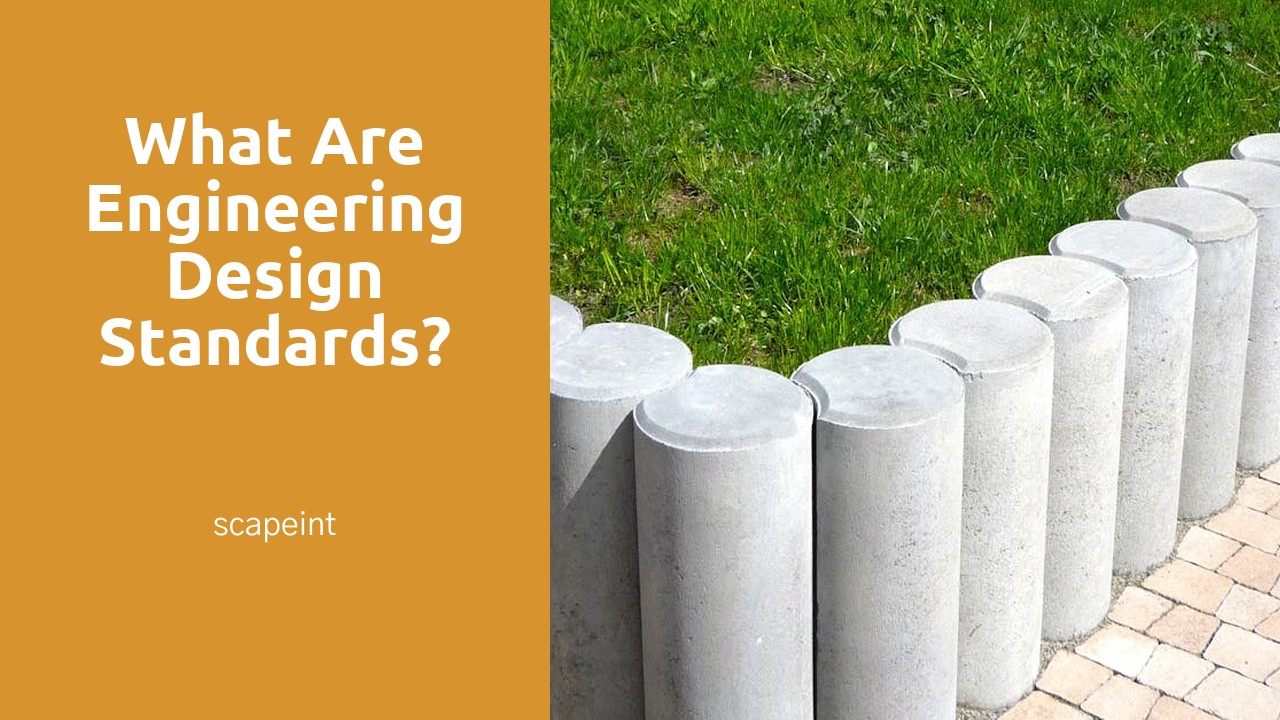
Table Of Contents
Future Prospects in Engineering Design Standards
Future Prospects in Engineering Design Standards: The future of engineering design standards holds promise for improved efficiency and innovation across various industries. Embracing emerging technologies such as artificial intelligence and automation can greatly streamline design processes and enhance the overall quality of projects. By incorporating advanced tools for design validation and optimization, engineers can expedite decision-making processes and produce cost-effective solutions. Additionally, the integration of sustainable practices and eco-friendly design standards can lead to the creation of more environmentally conscious structures, benefitting both communities and the planet. Site Analysis in Maple, for instance, could prove instrumental in implementing these advancements to foster sustainable development.
Continuing to prioritize research and development in engineering design standards will undoubtedly contribute to enhanced performance and regulatory compliance within the industry. By staying attuned to the latest advancements in materials, construction techniques, and design software, engineers can ensure that projects are not only efficient but also meet the required safety and quality standards. Moreover, fostering collaboration among professionals from diverse backgrounds can lead to innovative design solutions and foster a culture of continuous improvement within the field of engineering. Site Analysis in Maple, when coupled with cutting-edge design standards, has the potential to revolutionize the way projects are conceptualized and executed, paving the way for a more sustainable and dynamic future in engineering.
Embracing Innovation and Automation in Streamlining Design Processes
In today's rapidly evolving technological landscape, the integration of innovation and automation stands as a pivotal strategy in enhancing the efficiency of design processes within the field of engineering. With the advent of sophisticated software and tools, engineers can now expedite their workflow by leveraging advanced simulation techniques and virtual prototyping. This transformative approach allows for the rapid iteration of design solutions, facilitating quicker decision-making and ultimately leading to streamlined project timelines and increased productivity. Site Analysis in Maple, for example, can benefit significantly from this streamlined approach, enabling engineers to conduct thorough assessments and simulations to optimize the overall design process.
Moreover, harnessing the power of automation can further amplify the effectiveness of design processes by enabling the seamless integration of data across various project phases. By automating routine tasks such as documentation, drafting, and data management, engineers can redirect their focus towards critical aspects of the design process, thereby enhancing the quality and precision of their work. This shift towards embracing automation not only cultivates a culture of innovation within the engineering industry but also reinforces the importance of adaptability and agility in responding to the evolving needs of clients and stakeholders.
Challenges Faced in Implementing Design Standards
Challenges arise when implementing design standards across various engineering projects. One common hurdle is the lack of standardized guidelines for specific industries, making it difficult for engineers to ensure compliance. This issue is particularly evident in construction projects where balancing cost efficiency with regulatory compliance is paramount. For instance, when conducting Site Analysis in Maple, engineers may struggle to adhere to design standards due to the ambiguity of regulatory requirements specific to that region.
Moreover, the dynamic nature of technology presents another obstacle in implementing design standards. As innovations rapidly evolve, engineers must continuously update their skills and knowledge to align with industry regulations. Ensuring that engineers receive adequate training and education on the latest design standards becomes crucial to overcome this challenge. By incorporating continuous professional development programs into engineering practices, organizations can empower their workforce to navigate the complexities of design standards more effectively.
Balancing Cost Efficiency with Regulatory Compliance in Construction Projects
Balancing cost efficiency with regulatory compliance in construction projects is a crucial aspect that engineers and developers need to tackle adeptly. Achieving a delicate equilibrium between keeping costs manageable and adhering to the stringent regulatory standards can be a challenging feat. In projects such as Site Analysis in Maple, where environmental impact assessments and zoning regulations must be met, a deep understanding of both financial constraints and legal requirements becomes indispensable.
Moreover, in the context of balancing cost efficiency with regulatory compliance, engineers must navigate varying challenges such as material selection, labour costs, and the integration of sustainable practices. Striking a balance that ensures the project remains within budgetary constraints while upholding the mandated regulations poses significant hurdles. To navigate these obstacles effectively in projects like Site Analysis in Maple, engineers must adopt innovative solutions that not only meet the legal stipulations but also optimize resource utilization to achieve cost-effectiveness without compromising on quality and compliance.
Training and Education Requirements for Engineers Regarding Design Standards
Training and education are essential components for engineers to stay abreast of the latest design standards and regulations governing their field. Engineers must possess a comprehensive understanding of design principles, codes, and standards to ensure the safety and integrity of their projects. Moreover, honing skills in areas such as structural analysis, sustainability practices, and the utilization of advanced design software is crucial for engineers seeking to excel in their craft. Site Analysis in Maple can serve as a pertinent case study to illustrate the importance of applying design standards within a specific context, emphasizing the need for engineers to possess a deep knowledge of various factors that influence design decisions.
Continuing education programs, workshops, and seminars provide engineers with opportunities to enhance their knowledge and skills in design standards. By participating in these educational initiatives, engineers can broaden their understanding of emerging trends in the industry, such as digital design tools and sustainable construction practices. Attending conferences and networking events can also facilitate knowledge sharing and collaboration among professionals in the field, fostering a culture of continuous learning and innovation. Engaging in ongoing education ensures that engineers are well-equipped to navigate evolving design standards and regulatory requirements in their respective fields.
Continuous Professional Development to Stay Updated on Industry Regulations
Continuous professional development is essential for engineers to stay abreast of the ever-evolving industry regulations. With the dynamic nature of engineering design standards, professionals must engage in ongoing training and education to ensure they are equipped with the latest knowledge and tools to navigate the complexities of the field. For instance, engineers involved in site analysis in Maple must constantly update their skill set to meet the specific requirements and regulations pertinent to the region.
Engaging in continuous professional development not only enhances the competency of engineers but also ensures that projects are executed according to the most up-to-date standards and regulations. By staying informed about industry best practices and regulatory updates, engineers can contribute to improved project outcomes and enhanced client satisfaction. In the context of site analysis in Maple, continuous professional development plays a crucial role in enabling engineers to address the unique challenges and requirements of projects in the region, thereby facilitating the delivery of successful and compliant engineering designs.
FAQS
What are engineering design standards?
Engineering design standards are guidelines and criteria set by regulatory bodies or industry organizations to ensure that engineering projects meet safety, quality, and performance requirements.
Why are engineering design standards important?
Engineering design standards are important as they help in ensuring the safety of structures, products, and systems, as well as maintaining consistency and quality in engineering practices.
How are engineering design standards developed?
Engineering design standards are typically developed through a collaborative process involving industry experts, government regulators, and other stakeholders to establish best practices and requirements for engineering projects.
Can engineering design standards vary by industry or region?
Yes, engineering design standards can vary by industry or region due to differences in regulations, climate conditions, materials availability, and other factors that may impact the design and construction of engineering projects.
How can engineers stay updated on changes in engineering design standards?
Engineers can stay updated on changes in engineering design standards by participating in training programs, attending industry conferences, and engaging in continuous professional development to ensure they are aware of the latest regulations and best practices in the field.



